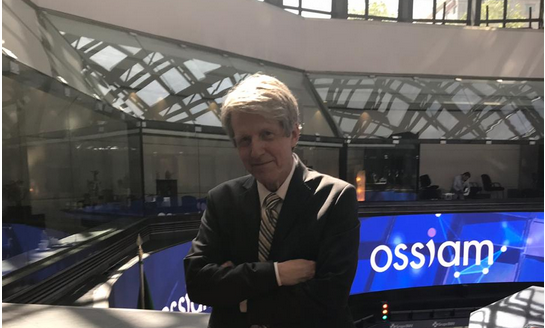4 Potential Reasons for the Gold Rally
| By Gabriela Huerta | 0 Comentarios

Russ discusses why gold, not a popular asset class until recently, has become so as a hedge.
October was not kind to investors. Not only did stocks suffer their worst monthly draw-down in years, but traditional hedges, such as government bonds, did not rallied enough to offset the losses (see Chart 1). As a result, a typical 60/40 stock/bond portfolio experienced one of the worst draw-downs since the financial crisis.
Interestingly, gold, largely left for dead, has rallied. Not only has gold bounced, but it has done so despite a steady dollar. Which raises the question: Why is gold rallying now? Here are four potential reasons:
1. Gold got “cheap.”
Over the very long term gold and the U.S. money supply, measured by M2, tend to move together. Changes in gold prices have roughly equaled changes in the money supply, with the ratio tending to mean-revert towards 1. By the end of September, this ratio had fallen to below 0.7, the lowest since 2005. When the ratio is low, defined as 25% below the long-term average, the average return during the subsequent 12-months is 15%.
2. The dollar has stabilized.
While the DXY Index is pushing against the upper end of its five-month range, the dollar has been relatively stable since May. This is important as a rapidly strengthening dollar, as we witnessed last spring, has historically been a headwind for gold. To the extent the dollar has stabilized, this removes one headwind.
3. Real rates also appear to have plateaued.
Besides the dollar, the biggest challenge for gold in 2018 has been rising real rates, i.e. interest rates after inflation. Higher real rates raise the opportunity cost of an asset that produces no income. Between January and early October, real 10-year yields advanced by 50 basis points. However, since then, real rates seem to have temporarily peaked near the levels reached in 2013.
4. The return of volatility.
While real rates and the dollar are key fundamental drivers for gold, demand for a hedge against volatility also drives gold prices. With the exception of the brief correction in February, that attribute has not been in demand until recently. Prior to the recent swoon, U.S. equities were well on their way towards another year of double-digit gains. Unfortunately, this pleasant trajectory has been interrupted. Equity market volatility, measured by the VIX Index, has doubled since early October. This is important, as gold has a history of performing best versus stocks when volatility is spiking. Historically, in months in which volatility rises by more than 20%, gold typically beats U.S. stocks by more than 5%.
Bottom Line
In short, whether or not gold can continue to rally will largely be driven by the direction of the dollar, real rates and market volatility. Another dollar rally will likely interrupt gold’s recent strength. That said, absent another leg up in the dollar, an environment of rising volatility, particularly one in which economic uncertainty is rising, has historically been exactly the environment when gold has proved its value as a hedge.
Russ Koesterich, CFA, is Portfolio Manager for BlackRock’s Global Allocation team.
In Latin America and Iberia: this material is for educational purposes only and does not constitute investment advice nor an offer or solicitation to sell or a solicitation of an offer to buy any shares of any Fund (nor shall any such shares be offered or sold to any person) in any jurisdiction in which an offer, solicitation, purchase or sale would be unlawful under the securities law of that jurisdiction. If any funds are mentioned or inferred to in this material, it is possible that some or all of the funds have not been registered with the securities regulator of Argentina, Brazil, Chile, Colombia, Mexico, Panama, Peru, Portugal, Spain, Uruguay or any other securities regulator in any Latin American country and thus might not be publicly offered within any such country. The securities regulators of such countries have not confirmed the accuracy of any information contained herein. The provision of investment management and investment advisory services is a regulated activity in Mexico thus is subject to strict rules. For more information on the Investment Advisory Services offered by BlackRock Mexico please refer to the Investment Services Guide available at www.blackrock.com/mx.
Investing involves risks, including possible loss of principal.
Commodities’ prices may be highly volatile. Prices may be affected by various economic, financial, social and political factors, which may be unpredictable and may have a significant impact on the prices of precious metals. Concentrated investments in specific industries, sectors, markets or asset classes may under-perform or be more volatile than other industries, sectors, markets or asset classes and the general securities market. A significant portion of the aggregate world gold holdings is owned by governments, central banks and related institutions. One or more of these institutions could sell in amounts large enough to cause a decline in world gold prices. Should there be an increase in the level of hedge activity of gold producing companies, it could cause a decline in world gold prices. Should the speculative community take a negative view towards gold, it could cause a decline in world gold prices.
This material is not intended to be relied upon as a forecast, research or investment advice, and is not a recommendation, offer or solicitation to buy or sell any securities or to adopt any investment strategy. The opinions expressed are as of November 2018 and may change as subsequent conditions vary. The information and opinions contained in this post are derived from proprietary and nonproprietary sources deemed by BlackRock to be reliable, are not necessarily all-inclusive and are not guaranteed as to accuracy. As such, no warranty of accuracy or reliability is given and no responsibility arising in any other way for errors and omissions (including responsibility to any person by reason of negligence) is accepted by BlackRock, its officers, employees or agents. This post may contain “forward-looking” information that is not purely historical in nature. Such information may include, among other things, projections and forecasts. There is no guarantee that any forecasts made will come to pass. Reliance upon information in this post is at the sole discretion of the reader. Past performance is no guarantee of future results. Index performance is shown for illustrative purposes only. You cannot invest directly in an index.
©2018 BlackRock, Inc. All rights reserved. BLACKROCK is a registered trademark of BlackRock, Inc., or its subsidiaries in the United States and elsewhere. All other marks are the property of their respective owners. 651513














